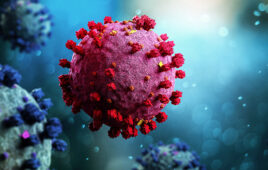FEI has entered into a Cooperative Research And Development Agreement (CRADA) with the National Institutes of Health (NIH), creating a “Living Lab Structural Biology Center” to promote structural biology research through the integration of cryo-electron microscopy (EM), nuclear magnetic resonance (NMR) spectroscopy, and X-ray diffraction (XRD) which may accelerate important medical discoveries relating to global health challenges such as HIV/AIDS and cancer.
The “Living Lab for Structural Biology,” which will be located on the NIH campus, is a unique, interdisciplinary collaboration among experts from FEI and internationally-recognized scientists from the National Cancer Institute (NCI) and the National Institute of Diabetes and Digestive and Kidney Diseases in the fields of cryo-EM, X-ray diffraction (XRD) techniques, nuclear magnetic resonance (NMR) spectroscopy and biochemistry. The research program will be enabled with FEI’s Titan Krios transmission electron microscope (TEM), the world’s most powerful commercially-available electron microscope for structural biology, and continued development of other state-of-the-art technologies necessary to advance the scientific scope of the collaboration.
Dr. Sriram Subramaniam, senior investigator in the Laboratory of Cell Biology of the National Cancer Institute, and a recognized leader in cryo-electron microscopy and related techniques, will serve as director of the Living Lab on the NIH campus. Leading NIH scientists in various other fields, including NMR spectroscopists such as Drs. Adriaan Bax and G. Marius Clore, X-ray crystallographers such as Drs. Fred Dyda and Alex Wlodawer and biochemists such as Drs. Suresh Ambudkar and Stuart Le Grice, will also actively participate in the multi-faceted research program of the Living Lab.
The collaboration involves the development of methods and workflows, from sample preparation through data analysis, which combine information from cryo-EM, XRD, and NMR. Scientists have historically relied on NMR and XRD techniques to determine the structures of molecular complexes and proteins that play a role in the causes of various diseases, such as AIDS, diabetes and cancer. Structural information about a variety of medically important proteins and drugs have been obtained by NMR and XRD methods, however, there are limitations to these techniques which put some of the critical biological answers out of reach. Cryo-EM is a complementary analytical technique that provides near-atomic resolution without requirements for crystallization or limits on molecular size and complexity imposed by the other techniques.
FEI’s President and CEO Dr. Don Kania commented, “This collaborative effort with NIH is a critical part of our strategy to provide complete microscopy solutions for life science research. Our Life Sciences business has been increasing rapidly and is a key part of our overall corporate growth plan. Helping our customers obtain increased value from electron microscopy in conjunction with and complementary to XRD and NMR is a key element of that plan.”
Date: January 12, 2012
Source: FEI




